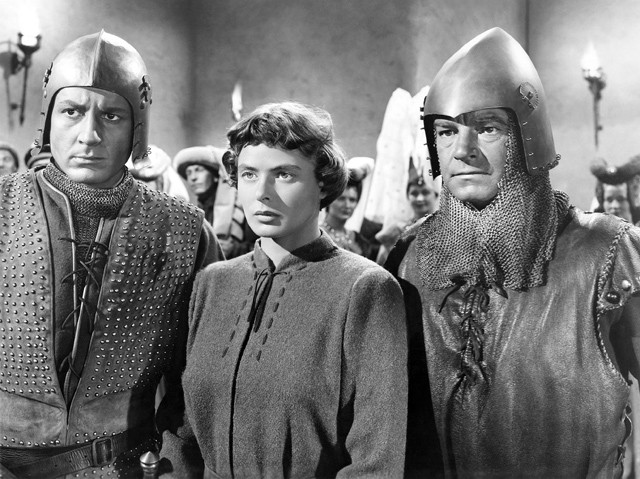Defy a Dress Code, Challenge the Patriarchy

Joan could not have chosen a more dramatic moment to defy a dress code. Costume historians identify the high Middle Ages as the arrival of fashion in western Europe. Cotton from Egypt; silks from the Ottoman Empire; improved dyes and dyeing techniques; complex patterns and new fabrics, like brocade and velvet, made possible by Chinese innovations in weaving: crusaders went east bearing murder and returned home with the ingredients for haute couture. And the increased social mobility that accompanied the aristocracy’s loss of power strengthened the yet ruling nobility’s resolve to assign and maintain standards of dress that identified a peasant as a peasant, no matter how much money he had to spend on disguising himself as a lord. Etymology identifies villein as the progenitor of “villainous,” as is churl of “churlish,” suggesting the regard in which the aristocracy held a peasant, whose lowly stature was received as proof of his base character. The Burgundian chronicler Georges Chastellain “attributes sublime virtues only to the nobility,” Huizinga observed of his Chronique des choses de mon temps, a history of the years 1417–74 that was written when “God, the theory went, had established an intangible order of which costume was merely the expression.” The Third Reich didn’t invent the yellow badge that announced its wearer as a Jew; it revived the idea from a decree made by Pope Innocent III in 1215 that Jews be “marked off in the eyes of the public from other peoples.”
By the time Joan was born, two centuries of increasing social unrest had drawn the strictures of sumptuary laws that much tighter; never before or since has Europe insisted on so rigid and visible a classification of its citizens. Even were a prostitute successful enough to afford the fine clothes of an aristocrat, she could never be confused with a lady, required, as she was by law, to wear a striped hood or cloak. Within this context, Joan, whose dress revealed, in the opinion of her judges, “her obstinacy, her stubbornness in evil, her want of charity, her disobedience to the Church, and the scorn she has of the holy sacraments,” refused to acknowledge the most basic and essential distinction, that drawn between male and female. “It was characteristic of the time, of the doctors’ narrowmindedness, of their blind attachment to the letter without any consideration for the spirit,” Michelet wrote, “that no point seemed more grievous to them than the sin of having assumed the garments of a man.”
A really, really excellent excerpt from Joan of Arc: A Life Transfigured is up on Longreads; it’s my favorite kind of fashion writing.
h/t Queen Arabelle.